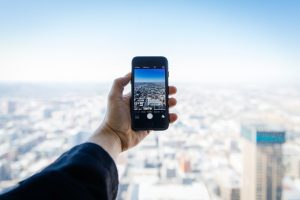Before Leaving for global travel
Whenever possible, arrange to use loan handheld devices and laptops while travelling. If not, it can be worth backing up all your data on an external hard drive or going through an IT managed service to securely protect your data.
Don’t store sensitive information on any internal or outside regional media. Thieves target travellers, and due to legal problems surrounding the use of encryption particularly around customs and border checkpoints, you may not be able to use encryption to protect information stored on digital devices.
Don’t store any credentials to accounts or services to third-party software or websites. Use software that is guaranteed and known for its security, such as 1Password, LastPass, and KeePass.

Configure your internet browser to not save details which may pose a threat, such as credit card details. Utilize the personal browsing features in contemporary browsers to stop credentials and data from being authenticated locally by your internet browser. This can be achieved by using incognito browsing.
Make Sure all programs are fully upgraded for security patches. Uninstall unnecessary and proprietary software, as this will help to reduce your attack surface. Configure the software you do need to automatically upgrade and notify you of available updates. Concern ought to be given to making sure that software used to interact with services, for example, internet browsers (Firefox, IE, Chrome), Adobe Acrobat, Flash, and Java, are equipped with the latest updates. These programs are increasingly being targeted by malware writers over working system vulnerabilities because so many consumers don’t patch them regularly.
Whilst travel you will probably be linking to a lot of new, inadequately handled, and possibly dangerous networks (e.g. in airports and resorts). Expect to get targeted by malicious users on such networks. Don’t use an administrator account as your main user accounts. A surprising quantity of browser and malware pops could be conquered by something as straightforward as working as a non-administrative account.
Be cautious what networks you link to. Anyone can bring a wireless network and call it anything they need, expecting to lure unsuspecting travellers into connecting. This is particularly a problem at hotels and airports, where folks have come to anticipate wireless connectivity. Request an employee in the place of business if they supply WiFi and if so exactly what the system name is. Do not link to rogue networks – that can make it effortless for a person to intercept and also change your communications.
Turn off wireless whenever your device isn’t being used or when network connectivity is not required. This prevents your device from broadcasting its existence and searching for accessible networks. Be wary of fake networks which share the title of a previously accessed network.
Turn off Bluetooth when it is not actively being used.
Maintain track of exactly what credentials you use to interact with providers. You will want to alter these when you return. Don’t use the exact same password for multiple providers, so that if the account is compromised, your other accounts will be safe.

Upon returning from international travel
Change all credentials which you used to get any services. Refer to this listing you created while travelling to ensure to change all of them. Don’t forget to choose strong, complicated and unique passwords. It can be difficult to identify whether your device is compromised, so meeting with an IT consultant to assess security can save you potential damage in the long term.

